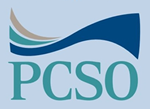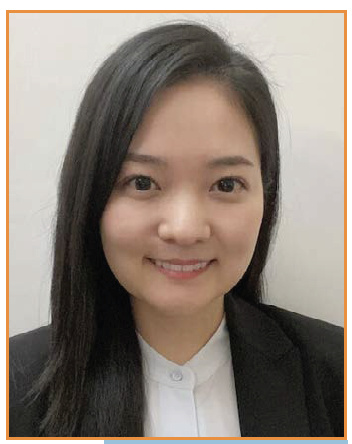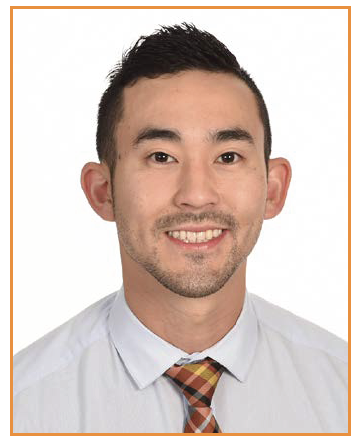Dr. Hae Jin Han
Mesa, AZ
PCSO Bulletin Contributor
Dr. Alan Kai
Mesa, AZ
PCSO Bulletin Contributor
Note: Please be aware that the PCSO Bulletin does not endorse nor promote any brands or products.
In recent years, artificial intelligence (AI) development has increased dramatically and has helped make the diagnosis and treatment process more accurate and efficient. AI involves collecting and processing data by using algorithms that can learn from the data collected. Now, dental applications (apps) use these AI algorithms to analyze the data to provide valuable feedback to both the consumer and clinician. Although orthodontic AI is still a work in progress, some apps are already available. Given the technological advances in apps, caution should be taken regarding their standards and reliability. Although remote monitoring provides an ability to maintain a continuity of care while minimizing in-office visits and risks of disease transmission, a balance between in-office visits and AI remote monitoring is necessary to maintain the standard of care.
IvoSmile Orthodontics App
The IvoSmile Orthodontics app (Figure 1) allows you to give your patients a preview of the potential esthetic treatment outcome during the orthodontic consultation appointment without their incurring any obligation. It uses AI to show patients a new smile on their smartphone within a few minutes. The app uses a digital communication and consultation app for a clear and motivating dialog with your patients. It provides a fast and exciting visualization of potential esthetic orthodontic treatment outcomes. The patient’s teeth are scanned with a 3Shape TRIOS (from Generation 3), and the TRIOS Treatment Simulator calculates a virtual setup of the teeth. This information is transferred directly to the IvoSmile Orthodontics app via the 3Shape Communicate portal. Innovative augmented reality technology is used to superimpose the potential treatment outcome on the digital mirror image of the patient in real time while the patient speaks, smiles, or moves his or her head. The virtual picture or video provides a lifelike preview of the potential improvements to the patient’s smile.
Pros
- Heightens the probability of a patient making a decision to proceed with treatment; impressive before-and-after images and the possibility of viewing oneself with the new restorations in a virtual mirror is an exciting experience for patients and will motivate them to seriously consider a smile makeover
- Facilitates not only your communication with your patients but also your communication with your dental laboratory partners
- Shows your patients their incredible new smile in just a few minutes
- Explains complex aspects of the treatment by providing visualizations
- Taps into the curiosity of your patients and gains them as customers
- Allows sharing pictures of the simulated outcome with your laboratory and with your patients
- Avoids additional expenses caused by misunderstandings or disagreements
- Draws a patient’s attention to potential limitations (attributed to individual anatomic requirements) in the realization of the esthetic orthodontic treatment
- Shows your practice is modern and innovative
Cons
- Technical requirements are an Apple iPad or iPhone with iOS 12
- Is limited to treatment simulation
Pearlii App
The Pearlii app (Figures 2 and 3) is a free smartphone app that uses AI technology for oral health check-ups and free expert oral health information. It allows free check-ups from the comfort of the patient’s home and is able to detect decay, stains, tartar, white spots, and red gums. The app instructs patients to take five photos—frontal, lateral (2), occlusal (2)—with their smartphones, and the AI will generate a result along with tailored advice. Pearlii uses a team of dentists who examine thousands of dental images, which teach their algorithm how to identify dental problems. It provides patients expert tips and personalized suggestions. It also tracks progress to improve oral health habits. The AI takes the photos from the Pearlii app to help train the algorithm to continuously improve the accuracy of future check-ups.
Pros
- The AI check-ups make it quicker, easier, and cheaper to detect potential issues and allow patients to act early against oral health risks.
- With regular preventive care, potential issues can be treated before they become a serious problem.
- No additional device is needed.
Cons
- The results are less accurate because results are coming from photos only.
- It is difficult to capture all necessary images because photos are taken with no retractors.
UUNN App
The UUNN app (Figure 4) tracks plaque on teeth. It uses a proprietary lens that mounts onto a smartphone camera to take three photos: one front and two lateral (Figure 5). Within minutes, the app algorithm analyzes the patients’ teeth and lets them know where the plaque is and shows them where to focus on brushing. UUNN also highlights the identified plaque, Focus Areas, so users know exactly where to brush to remove it. It guides the users with the best brushing and flossing techniques to appropriately target the plaque.
Pros
- All teeth are included for detection.
- The results are more accurate than those based on photos taken only with smartphones.
- It provides convenient and easy access to dental care.
Cons
- It is currently available only in the United Kingdom.
- You need to mount a device to take photos.
- It detects gingival inflammation only.
Dental Monitoring
Dental Monitoring (DM) is a software that allows patients to accurately capture their dentition using a smartphone and patented cheek retractors (Figures 6 and 7). DM is the process of encouraging patients and orthodontists to work together to monitor the progress of treatments with braces and clear aligners. It uses AI technology to check the treatment progress, tooth movement, appliance condition, and oral hygiene status by stitching together photos taken by the patient. These weekly photos are uploaded into the mobile app. You can remotely monitor elements of each patient’s treatment through the web-based Doctor Dashboard (Figure 8) and send necessary feedback and instructions. These virtual check-ups can dramatically reduce patient chair time and the number of office visits while maintaining the same quality of treatment care. The DM AI uses algorithms to track tooth movement throughout treatment, and it can be used with traditional braces and with clear aligners. If teeth are not moving appropriately, then necessary adjustments can be identified more quickly. Appointments can also be more efficient if the needed changes are already identified. Over time, you can monitor the treatment progress from the DM photo time-lapse technology, which shows how the teeth are moving toward the goal.
Pros
- Treatment progresses as you monitor it remotely.
- You can communicate with patients through the app whenever needed, track progress, and schedule the next appointment when it is best for treatment. You and your patients will have any information needed before the appointment.
- You can check a patient’s teeth and compile data of any movement even during the retention phase when orthodontic treatment has been completed.
- You can detect issues early through closer supervision of treatment between appointments and automated next steps. This detection allows for improved emergency management and prevents unnecessary trips to your office.
- By using the DM time-lapse feature, patients can see the progress they are making toward their perfect smile in real time. Patients who take an active role in their treatment have more confidence and are more compliant as they work along with the orthodontists and their staff.
Cons
- It is expensive:
- Includes a setup fee
- A monthly per patient fee photo monitoring
- A monthly per patient fee for three-dimensional monitoring
- You need to mount a device to take photos.



